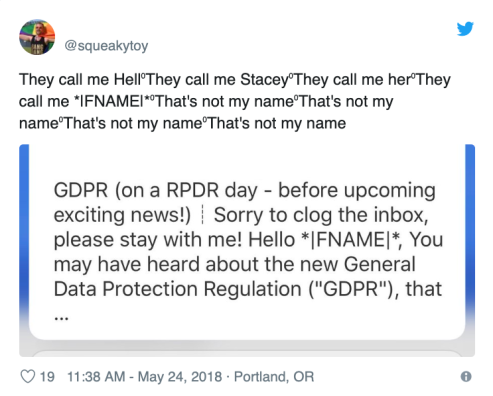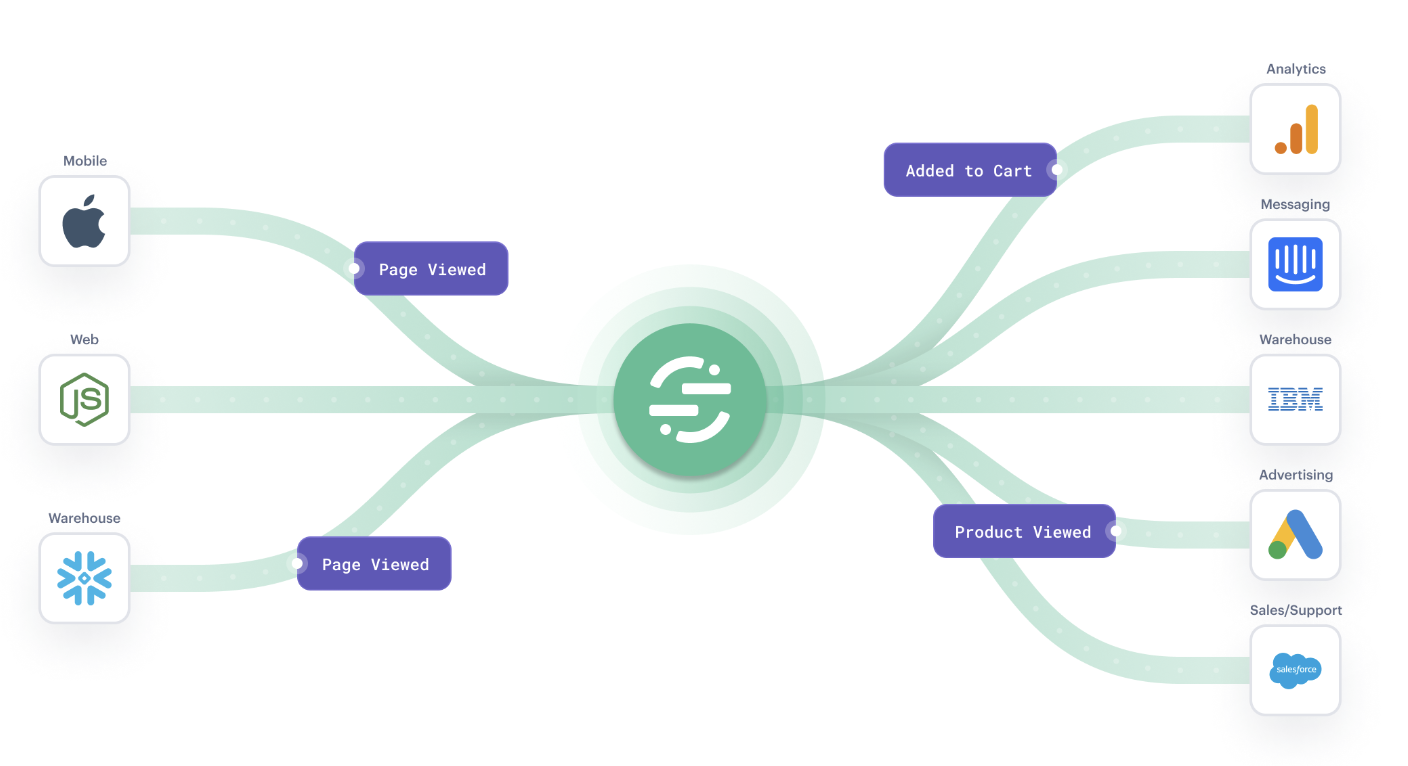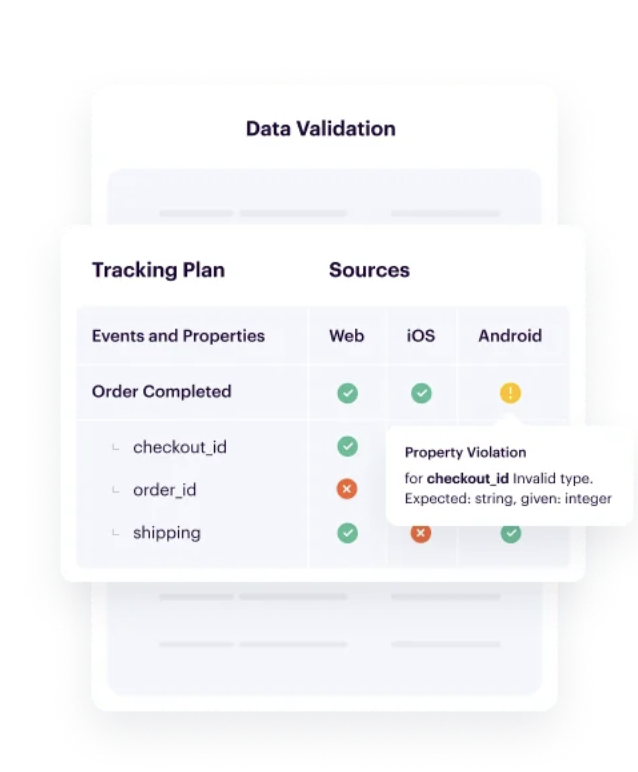Reliable data: what it is, why it’s important, and how to determine data reliability
Learn about the importance of reliable data, and how to achieve it within your organization.
Learn about the importance of reliable data, and how to achieve it within your organization.
There’s a difference between collecting data and being able to guarantee its accuracy. Human error, a disjointed tech stack, and no unified data governance policy can easily lead to data discrepancies.
Poor data quality costs organizations nearly $13 million annually. To avoid this, businesses need to focus on how they’re cleaning, consolidating, and managing their data to help them make informed decisions.
To help paint a picture of what data reliability means, in this article, we’ll cover:
What is reliable data?
Data reliability vs. data validity
Why is data reliability important?
How to achieve & maintain maximum data reliability
How to improve data reliability with the experts at Twilio Segment
FAQs on data reliability
Reliable data refers to the accuracy and completeness of the data you collect. Reliability is an important facet of data integrity, and points to how much confidence and trust an organization has in using their data to inform processes and decision making.
Errors or inconsistencies in your data can threaten business operations, insights, and the ability to reach your objectives. This is why it’s important to understand the entire data lifecycle to ensure reliability at every stage (e.g., collecting, cleaning, consolidation, usage, and eventual deletion).
Data reliability and validity are both important aspects of data health, but they’re not the same. Data reliability is knowing that data is accurate and can be trusted for analyzing and making decisions, while data validity refers to the consistency of data formatting.
Data validity is an essential part of data reliability: you can’t have reliable data without valid data. For example, you may have a customer’s correct address in your database, but if it’s not formatted correctly (e.g., the apartment number is placed where the zip code should go) it’s not valid nor reliable.
Reliable data is crucial to a business’s ability to make data-driven decisions (like understanding which initiatives will yield the biggest ROI) and avoid missteps (like sending marketing emails to invalid email addresses).
Bad data isn’t just virtually useless, it can also cause legal problems, erode customer trust, and hinder business growth. Conversely, prioritizing reliable data allows you to reap the benefits that come with it – happier customers, boosted revenue, and more efficient operations.
Data can unlock key insights for your business: how to streamline operations, what should be prioritized in your product roadmap, which acquisition channels have the highest ROI - the list goes on. However, what all these possibilities have in common is their ability to generate more revenue, whether by mirroring customer expectations, finding the right product-market fit, or not wasting time and resources on channels and touchpoints that generate little returns.
A prime example of this is with Adevinta, a leading online classifieds provider in Europe. Adevinta has 25 digital brands, which operate across 11 countries. As a result, they had multiple teams working with multiple different tools and product roadmaps – and there was little visibility between departments as to what data was being collected. So, Adevinta used Segment to help establish a universal tracking plan, standardize collection, and consolidate data into a single source of truth. By implementing the right infrastructure, and having confidence in the data they collected (which in turn, fed their campaigns and real-time personalization strategies), Adevinta was able to:
Decrease marketing campaign costs by 200%
Save 25% of engineering hours previously dedicated to fixing errors
Increase operational efficiency by 10%
There are countless instances of bad data out in the wild. One of the most common examples of bad data is a lack of relevance and personalization – like receiving a promotion for a product that you just returned, as one example.

Reliable data means every department within your organization is working off the same complete and up-to-date insights. This allows marketing to create highly relevant audiences for their campaigns or for customer support to flag potential churn risks and proactively intervene (as just two examples). In this day and age, customer experience is everything – and the quality of your interactions is what will cement customer loyalty.
Reliable, error-free data helps you scale faster by understanding your customers and analyzing their behaviors. Univision, the United States’ leading Spanish-language media company, is a great example of this.
Univision needed to better understand customer behavior to drive subscriptions for their new streaming service, ViX. But they needed the necessary infrastructure for collecting, unifying, and taking action on customer data. Intending to launch ViX in three months, they had millions of customer data touchpoints to track. Twilio Segment’s customer data platform (CDP) gave Univision access to behavior analytics, which enabled them to create targeted marketing campaigns (which have helped increase monthly streaming rates by 20%).
Embrace these best practices to keep your data reliability high and your overall data health strong.
Optimizing data collection, storage, and analysis will depend on your data infrastructure. A customer data platform like Twilio Segment is able to streamline the process of integrating new tools into your tech stack, offloading what would otherwise be manual labor.
Segment can then automatically collect, clean, and consolidate data in real time. While businesses can send their data to any downstream destination for activation, they can also leverage Segment Unify to see a real-time, unified view of each customer.

If you have duplicate records, your data isn’t unique (or accurate). Duplicate records can misrepresent campaign results, or lead to subpar customer experiences. Confirming data uniqueness happens during the validation process. We recommend creating a universal tracking plan to create internal alignment within your organization.
Where data originates from is an important aspect of its reliability. For instance, buying data from a third-party source is risky for a few reasons: you can’t be sure the data is correct, and, if you haven’t built a relationship with customers, it could feel invasive (and creepy) to know certain facts about them.
We recommend prioritizing zero-party data (which is freely given from customers to your business via surveys, forms, etc.), and first-party data (which comes from direct interactions with customers, like the pages they view on your website). This data is unique to your business: no other company should have access to this information. Second, it’s highly reliable, especially in a world where data privacy regulations are continually evolving (and once-common tactics, like using third-party cookies, will soon be phased out).
Data cleaning refers to the process of fixing or removing duplicate, incomplete, invalid, or irrelevant data to ensure that it remains correct, usable, and able to be properly analyzed.
We’ve mentioned this before, but we recommend standardizing the way you collect data to ensure its cleanliness. When everyone is following the same naming conventions, and everyone is clear on what data is being collected, it’s easier to spot inconsistencies before they make their way into the data set (in fact, there are tools available like Segment Protocols which can perform automatic QA checks to block bad data from the jump).
Data maturity refers to a businesses’ ability to leverage data-driven decision making at every level of the organization. Advanced data maturity is when businesses have broken down data silos, consolidated customer data into unified profiles, and have democratized data across the company so that every person is using it to discover insights, hone strategies, and set realistic KPIs.
Below, we outline how companies can move from a foundational data strategy to an advanced and adaptive one

The reliability of data can be a tricky thing to establish, but Twilio Segment can help.
Connections helps you collect event data from all the channels you use, including mobile apps, websites, and servers, with one API. It then pulls in data from your CRM and other internal databases to build a complete picture of your customers.
The engineering and data science teams at Endeavor, an American holding company for media and talent agencies, needed to integrate customer data from multiple sources. So, they used Connections to centralize data collection, scale their data infrastructure, and share information throughout the company based on individual roles. With newfound visibility into customer behavior, Endeavor teams use accurate analytics and other downstream tools to create effective marketing campaigns.
Twilio Segment Protocols helps keep your data clean, standardized, and up to date. With Protocols, data reliability issues are diagnosed before they infiltrate your marketing and analytics tools or data warehouses, helping companies achieve data governance at scale.

Unify merges real-time customer data across each platform and channel you use, so you can understand the customer journey and personalize experiences.
Take global healthcare leader Sanofi. They needed a complete view of their healthcare providers to better understand the customer journey. The goal was to provide more personalized experiences and positively impact patient outcomes. By partnering with Segment, Sanofi was able to build “golden profiles” of customers by using Unify to combine customer data from multiple sources in their data warehouse (and quickly create 35+ audiences that were tailored to each campaign).

Our annual look at how attitudes, preferences, and experiences with personalization have evolved over the past year.
You can ensure data is reliable by understanding the data lifecycle (e.g., knowing how data is collected, stored, and used). Also, establishing a data governance framework helps create internal alignment around data best practices and management.
An example of reliable data would be a record with a customer’s complete name and address, as well as past purchase history and which pages on your website they’ve interacted with. Unreliable data would be if you found a duplicate record for the same customer but with multiple different addresses listed (and no certainty over which one should be used for shipping).
When your data is kept in separate systems or silos, each department in your organization has different data sets, some of which are likely incomplete or inaccurate. This can result in your data being unreliable.
Data reliability, validity, and hygiene are interrelated concepts. Data reliability refers to the consistency of data, or the extent to which data produces stable results over time and in different conditions. Data validity is concerned with the accuracy and correctness of data. Data hygiene refers to the cleanliness and quality of data. It involves ensuring that data is complete, consistent, accurate, and free from errors or inconsistencies.